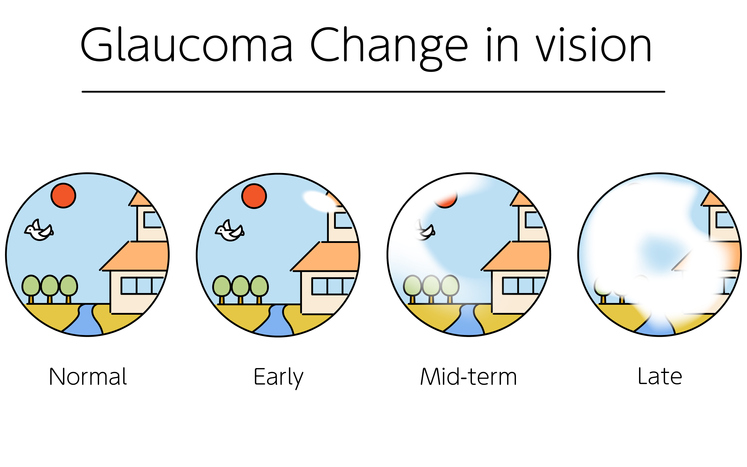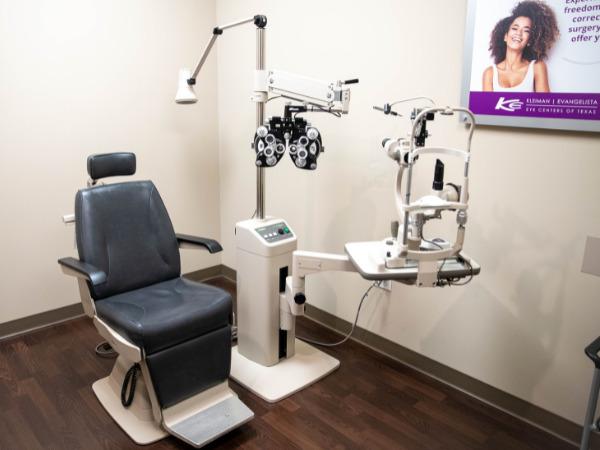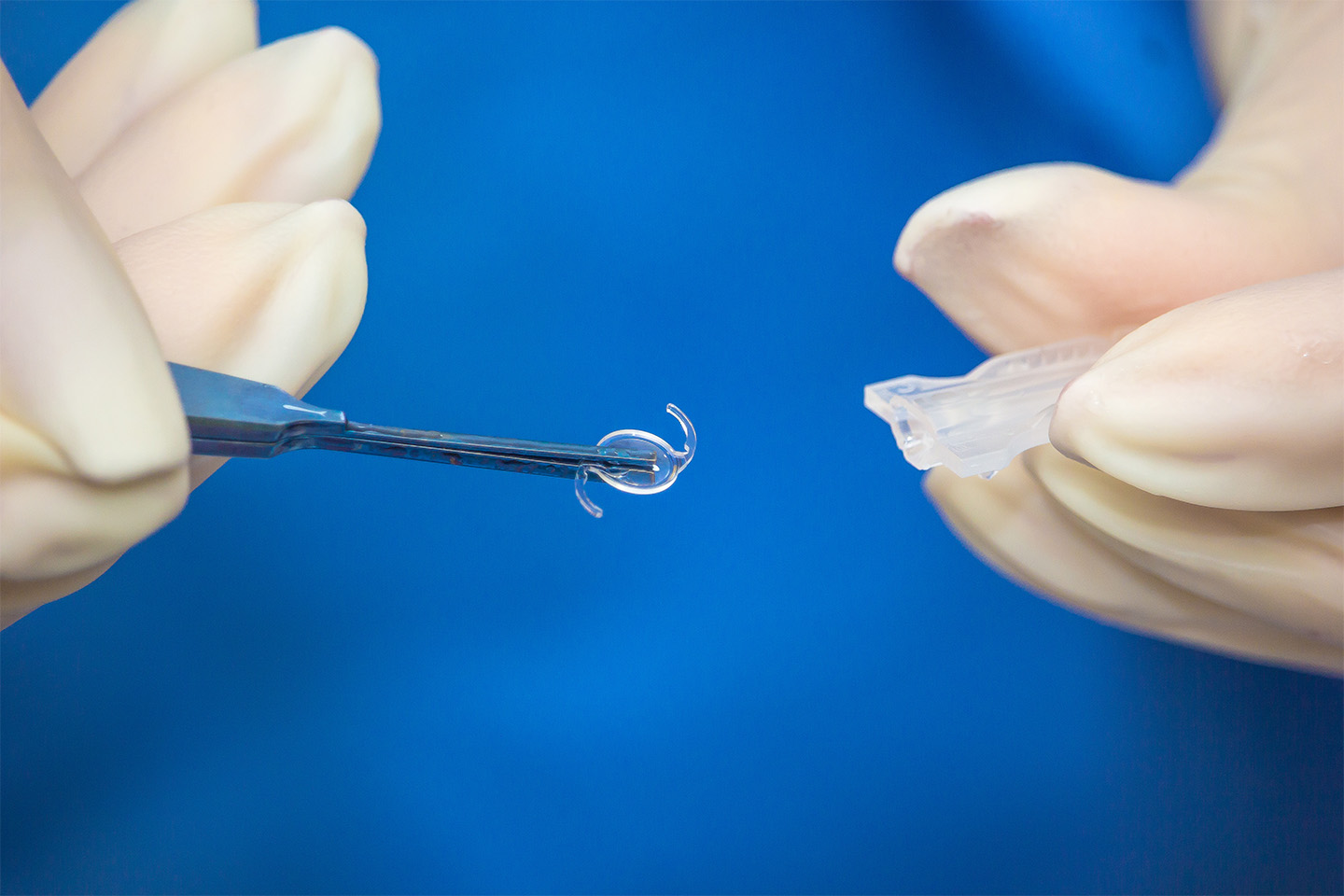National Glaucoma Awareness Month

January is National Glaucoma Awareness Month. It is an excellent time to learn about early detection, find out why it can be dangerous, and how you can protect your vision.
Glaucoma is a grouping of serious eye conditions causing nerve injury and eventually blindness. It affects 80 million people around the world, and this number may rise to 111 million by 2040. These numbers are high because glaucoma can do significant damage before showing any major symptoms. Unfortunately, the damage is irreversible, and the disease is currently incurable. However, eye care professionals can spot glaucoma even in its initial development. Experienced eye care professionals offer hope for vision conservation with advanced tools and treatment techniques.
Often, glaucoma goes undetected because people are unaware of its possibility. At Kleiman Evangelista Eye Centers of Texas, we encourage all our patients to get the facts about glaucoma and ask their eye doctors about regular eye exams. In support of National Glaucoma Awareness Month 2023, we explore the most critical details of glaucoma below. Learn how you can detect glaucoma in yourself or someone you care about, and where to get help.
National Glaucoma Awareness Month
At the beginning of the year, we make new year’s resolutions and promise to make positive changes in our lives. National Glaucoma Awareness Month takes place every January. It reminds us how important it is to know about our eye health and schedule vision care in these goals. We’re happy to join the National Eye Institute in raising awareness of this common vision impairment.
The campaign’s primary goal is to raise awareness and understanding about glaucoma. Many people hear the term in passing but they do not know what it is, how many people suffer from glaucoma if they are at higher risk for the disease, and how to protect themselves. When they understand this information, they care better for their eyes and vision. They also can share their knowledge and concerns with friends, family members, and other loved ones.
It is vital to receive regular eye evaluations so that professionals can identify and treat eye diseases, such as glaucoma, in their early stages. Almost three million Americans have glaucoma, but only 50% know they have it, leaving 1.5 million susceptible to complete vision loss, according to the Glaucoma Research Foundation. Our ophthalmologists at Kleiman Evangelista Eye Centers of Texas can perform comprehensive eye tests to detect the disease. We offer multiple treatment options to stop further damage and vision problems.
What Is Glaucoma?

Glaucoma is a set of eye conditions that progressively destroy the optic nerve. The optic nerve is critical for clear and rich vision. It uses electrical impulses to transmit visual images from the eyes to the brain. If this nerve incurs damage, it can send inaccurate or incomplete pictures. Over time, the nerve fails to convey images at all. Once glaucoma reaches this point, the affected person suffers complete blindness.
Eye care providers cannot cure glaucoma or reverse optic nerve damage. Yet, they can slow or prevent any further progression of the eye disease. Our Kleiman Evangelista team hopes to inspire people to schedule a glaucoma screening exam or talk to their doctors about their risks. In this way, professionals can detect glaucoma before any vision problems or loss. Therefore, we urge you to keep up with eye exams and come in for a consultation if you show signs and symptoms of glaucoma.
Types of Glaucoma
In most cases of glaucoma, high eye pressure or intraocular pressure causes optic nerve damage. Healthy eyes produce a certain amount of aqueous humor. It flows through different components in the eye and leaves through a designated network and drainage canal. However, various factors can impact the eye’s ability to produce an average amount of liquid, allow it to move freely through the eye, or drain it properly. Accordingly, intraocular pressure accumulates and causes progressive damage to the optic nerve. High eye pressure can create two different kinds of glaucoma.
Primary Open-Angle Glaucoma
Primary open-angle glaucoma accounts for 95% of glaucoma cases. The aqueous humor cannot move through the network or drain efficiently. Accordingly, the liquid accumulates, and pressure builds slowly. It harms the optic nerve, eroding vision over time. Alternatively, people may present with normal-tension glaucoma, a sub-type of open-angle glaucoma. It occurs even when there is normal or low intraocular pressure. In most cases of primary open-angle glaucoma, symptoms do not appear until there is significant damage.
Acute Angle-Closure Glaucoma
Acute angle-closure glaucoma is a rare type of glaucoma. If the drainage canals between the iris and the cornea become smaller, it can stop drainage. As a result, eye pressure increases rapidly and causes optic nerve damage. Patients may not have any warning signs of acute angle-closure glaucoma, but onset symptoms are obvious and often painful.
Symptoms of Glaucoma
National Glaucoma Awareness Month reminds us that glaucoma does not present early symptoms, making it hard to catch. Since this is the case, it is important to schedule routine eye exams, ask your eye doctor about glaucoma, and book eye care appointments if you notice any vision changes.
With primary open-angle glaucoma, optic nerve damage progresses silently. Then, affected individuals start to experience blind spots in their peripheral vision followed by central vision loss. If neglected and untreated, the damage progresses and destroys the entire nerve. At this point, people suffer complete blindness. Glaucoma is one of the major causes of blindness in the United States, generating 9 to 12% of all blindness cases.
Acute angle-closure glaucoma symptoms occur suddenly. Emergency signs include headaches or migraines, eye pain, and pressure, rainbow-colored rings around lights, blurred vision, tunnel vision, blind spots, vision loss, red eyes, dilated pupils, and nausea or vomiting. This experience can be startling and scary for the affected individual.
The Importance of Regular Eye Exams

At Kleiman Evangelista Eye Centers of Texas, we understand that it can be easy to neglect regular eye checkups and exams. However, it is one of the best defenses against eye conditions, especially invisible threats such as glaucoma. Optometrists and ophthalmologists run an array of tests to ensure your eye is healthy and your eyesight is on point. During these exams, they can detect the presence of glaucoma and any existing damage. Since January is National Glaucoma Awareness Month, it is an excellent reminder to book your first appointment.
Discuss how often you should receive eye exams and glaucoma screenings with your eye doctor. Depending on your eye health and risk factors, you may need to receive an annual exam. If you follow the prescribed schedule, eye care professionals can intercept glaucoma as soon as possible. They can immediately prescribe treatment and prevent additional vision problems.
Additionally, patients can ask questions about glaucoma in their examinations. Our team of eye care professionals are happy to provide any requested information, discuss whether you’re in a high-risk group, and ensure you receive the care you need. In this way, regular eye exams can help you stay informed about your eye health and eyesight.
Glaucoma Risk Factors
Glaucoma Awareness Month 2023 sheds light on the fact that anyone can suffer from glaucoma. However, many groups may have a higher risk of developing this eye disease. Suppose you can associate with any of the following factors. In that case, it may be even more vital for you to schedule consistent glaucoma tests with your eye doctor:
- You are over the age of 60
- You are African, Asian, or Latino populations and you are over the age of 40
- You have a family history of glaucoma (congenital glaucoma)
- You have diabetes
- You have severe nearsightedness or farsightedness
Additionally, you may be more susceptible to glaucoma if:
- You have a family history of diabetes
- You have hypertension, obesity, migraines, or circulatory issues or disorders
- You take steroid medications
- You have higher eye pressure than average
- You have thin corneas in the middle
- You have optic nerve problems
- You suffered eye injuries or had eye surgery
Protecting Your Vision
If you are worried about glaucoma, know there are certain steps you can take to protect your vision, catch glaucoma, and stop vision loss. Our Kleiman Evangelista team stresses the importance of receiving routine eye exams, as professionals are the only ones who can detect glaucoma early and treat it before it becomes worse. Most people should visit their eye doctor every one to two years but check with your eye doctor to set up an optimal schedule for you.
It is also essential to take care of your overall well-being. Common ways to do so include:
- Staying active
- Eating right
- Maintaining a healthy weight
- Managing health problems
- Knowing your family history
- Sharing information with your eye care provider
Your loved ones may benefit from your awareness and knowledge of glaucoma. Share your concerns and encourage friends and family to schedule regular eye exams. In this way, we can all work together to fight against glaucoma and combat preventable cases of blindness.
Diagnosis and Treatment
Ophthalmologists can perform one or more tests to determine if you have glaucoma. They are non-invasive exams, allowing eye doctors to check various aspects of your eye and eyesight. They may include:
- A visual acuity test to evaluate vision
- A visual field test to assess side vision
- A dilated eye exam to view the optic nerve
- A gonioscopy to look at the drainage system between your iris and cornea
- An optical coherence tomography to analyze optic nerve changes
- A tonometry to measure intraocular pressure
- A pachymetry to measure the thickness of the cornea
If professionals detect glaucoma, they establish a treatment plan that meets your needs. Typically, eye doctors prescribe medication, laser treatment, or surgery. In most cases, they start with eye drops, but if this proves ineffective, they move on to laser or conventional surgery. Immediate treatment is the best way to avoid the devastating consequences of glaucoma, namely blindness.
- Medication: Eye drops can help the eye produce less aqueous humor or allow the liquid to move freely throughout the eye.
- Laser Surgery: Skilled eye doctors use laser treatment to fix the cause of the intraocular pressure. Lasers can make precise cuts and slices to unblock drainage canals, create new drainage holes, or remove eye tissues producing aqueous humor.
- Conventional Surgery: Traditional surgery options include making new drainage canals or implanting mini-shunts to bypass ineffective portions of canals.
Contact
National Glaucoma Awareness Month 2023 can remind us all to take care of our eye health and vision. If you have concerns about your vision or glaucoma, visit Kleiman Evangelista Eye Centers of Texas. Our eye care team can answer any questions, discuss your worries, assess your risks, and run comprehensive evaluations.









